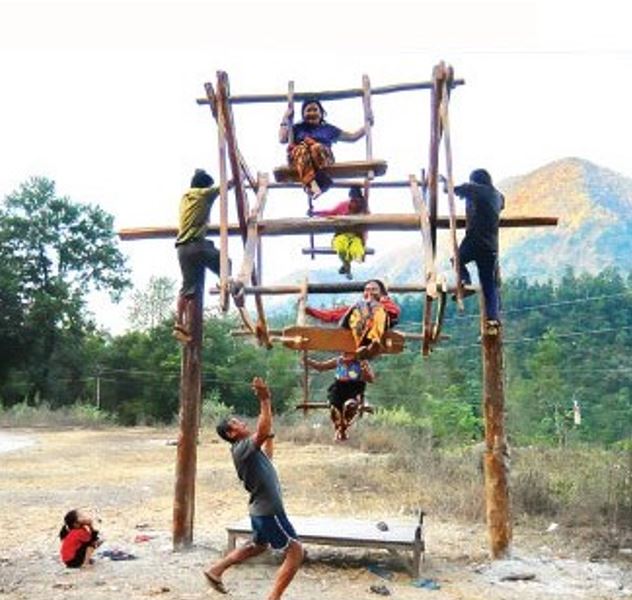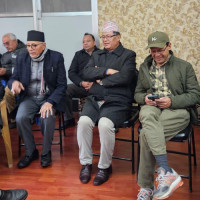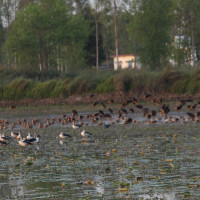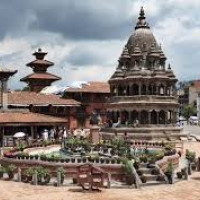- Saturday, 3 January 2026
Reviving the swing: Dashain’s fading tradition and Nepal’s cultural identity
BY RABINDRA UPRETI, Bardibas, Sept. 28: Dashain, the biggest festival of the Nepali people, is deeply connected with the swing culture. In Nepali society, one of the most eagerly awaited aspects of Dashain is the swing, locally known as ‘ping’. Swings have long attracted people of all ages, from children and youth to the elderly. More than just a form of recreation, the swing is a vibrant tradition and a priceless cultural heritage of Nepal.
However, this indigenous tradition, once an integral part of Nepali culture passed down from our ancestors, has been gradually fading in recent years. In the name of modernity, the swing culture has undergone a significant decline and is now on the verge of extinction. What was once a common sight in every neighbourhood during Dashain is now rare and hard to find.
According to Narayan Ghimire, President of the Progressive Writers’ Association of Madhes Province, the ‘lingey pings’ of the Tarai and ‘rote pings’ in the hills are symbols of Nepali tradition, community spirit, and entertainment. Swings not only provide an alternative to modern sports, but they also foster a sense of cooperation and harmony in rural communities.
“Swings are not just about play and enjoyment, they are also an expression of our cultural identity,” he said. “It represents our cultural heritage. Every movement of the swing reflects our folk life, social cooperation, indigenous traditions, and cultural values.”
Swings are also an excellent example of communal living and social collaboration. When Dashain approaches, elderly citizens often become nostalgic, reminiscing about childhood memories linked to swings. One such person is 77-year-old Bhawani Bahadur Chhetri from Bardibas-1. According to him, swings were once installed in every neighbourhood during Dashain. In Bardibas alone, there used to be five different swing locations. He said, “I used to set up a swing near my house. The Khadka family would put up another one slightly east of us. Other swings were built along the Aurahi road, in the lower market area, and in the school neighbourhood, five spots in total in Bardibas.”
Building the swings involved people of all ages in the community. As Dashain approached, locals would raise funds and collect materials like ‘babiyo’ (a strong grass used for ropes). Even the forest department used to help by providing logs or bamboo poles for the swings.
Babiyo grass was brought down from the Chure hills, and its arrival marked the formal beginning of swing construction. Under the guidance of elders, people made ropes, tied knots, and crafted support bindings. Young men fetched logs or bamboo poles, others dug holes for installation, and children added their own energy and excitement, running around and eagerly waiting for the swing to be ready.
But that excitement now lives only in memory, said Chhetri. Due to urbanisation, lack of open space, the rise of social media, and youth migration abroad, the swing culture has been vanishing from the Madhes region over the last two decades.
He said, “Places in Bardibas where we once built swings are now occupied by large buildings. The babiyo grasslands in the Chure hills have disappeared. It’s hard to find tall, straight logs in the thinning forests. On top of that, the youth who once contributed to cultural preservation are now either abroad or absorbed in social media. That’s why the swing tradition is disappearing.” According to Dr. Ritesh Ghimire of Bardibas Hospital, swings are not just about tradition and fun, they also have direct health benefits.
He said, “Swings are a healthy form of entertainment. Swinging helps with physical balance and fitness, and it boosts self-confidence. The joy of swinging helps reduce fatigue and contributes to mental well-being.” Ram Kumar Karki, a former administrator and resident of Kalapani in Bardibas-3, also sees swings as more than just a source of amusement. To him, swings are a part of Nepal’s culture, tradition, and identity.
Despite the widespread decline, he said that in his own village, the swing culture was still being preserved. He said, “Every year, we build a swing in our Kalapani community. It plays a crucial role in passing down our customs and traditions to future generations.”
















